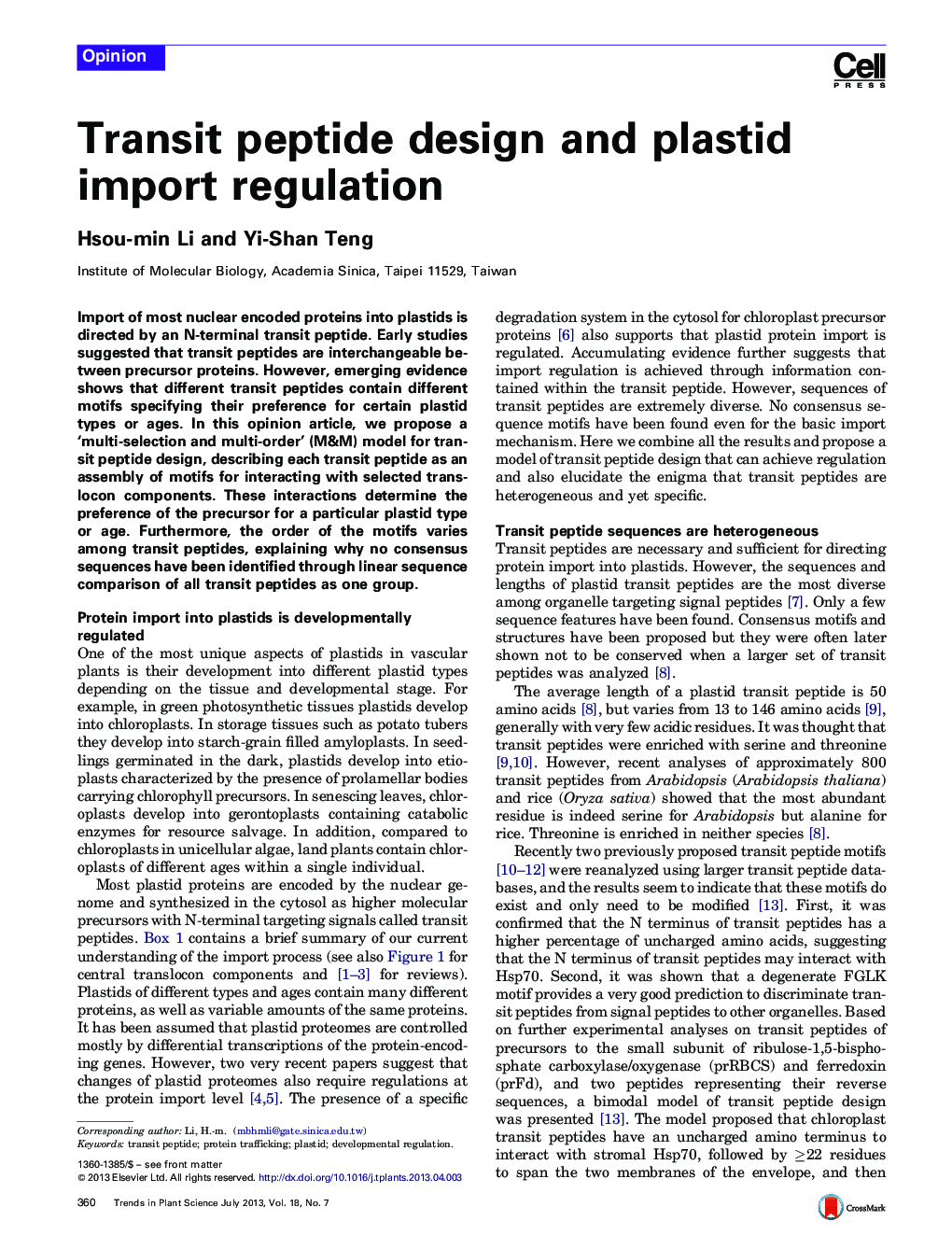| Article ID | Journal | Published Year | Pages | File Type |
|---|---|---|---|---|
| 2826255 | Trends in Plant Science | 2013 | 7 Pages |
•Plastid proteome can be regulated at the protein import level.•Transit peptide motifs specify preference of precursors for plastid types and ages.•A ‘multi-selection and multi-order’ (M&M) model for transit peptide design is proposed.•Order of motifs can be different for different transit peptides.
Import of most nuclear encoded proteins into plastids is directed by an N-terminal transit peptide. Early studies suggested that transit peptides are interchangeable between precursor proteins. However, emerging evidence shows that different transit peptides contain different motifs specifying their preference for certain plastid types or ages. In this opinion article, we propose a ‘multi-selection and multi-order’ (M&M) model for transit peptide design, describing each transit peptide as an assembly of motifs for interacting with selected translocon components. These interactions determine the preference of the precursor for a particular plastid type or age. Furthermore, the order of the motifs varies among transit peptides, explaining why no consensus sequences have been identified through linear sequence comparison of all transit peptides as one group.
